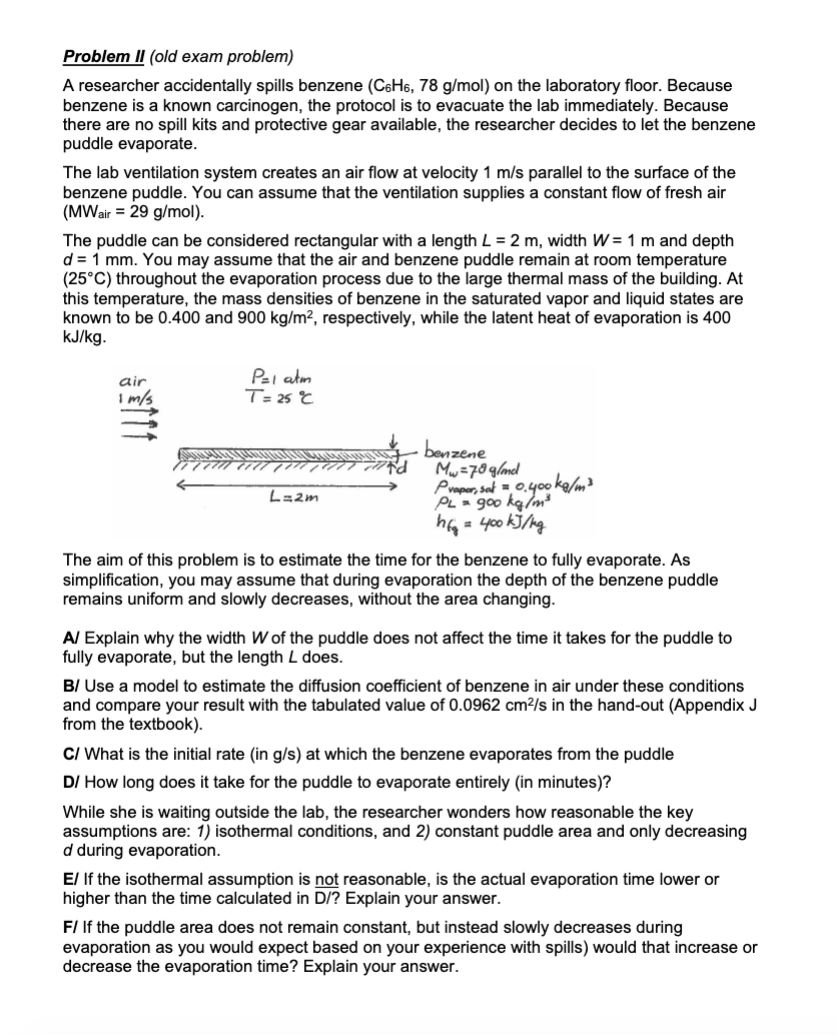Answered step by step
Verified Expert Solution
Question
1 Approved Answer
Problem II ( old exam problem ) A researcher accidentally spills benzene ( C 6 H 6 , 7 8 g m o l )
Problem II old exam problem
A researcher accidentally spills benzene on the laboratory floor. Because
benzene is a known carcinogen, the protocol is to evacuate the lab immediately. Because
there are no spill kits and protective gear available, the researcher decides to let the benzene
puddle evaporate.
The lab ventilation system creates an air flow at velocity parallel to the surface of the
benzene puddle. You can assume that the ventilation supplies a constant flow of fresh air
The puddle can be considered rectangular with a length width and depth
You may assume that the air and benzene puddle remain at room temperature
throughout the evaporation process due to the large thermal mass of the building. At
this temperature, the mass densities of benzene in the saturated vapor and liquid states are
known to be and respectively, while the latent heat of evaporation is
The aim of this problem is to estimate the time for the benzene to fully evaporate. As
simplification, you may assume that during evaporation the depth of the benzene puddle
remains uniform and slowly decreases, without the area changing.
A Explain why the width of the puddle does not affect the time it takes for the puddle to
fully evaporate, but the length does.
B Use a model to estimate the diffusion coefficient of benzene in air under these conditions
and compare your result with the tabulated value of in the handout Appendix J
from the textbook
C What is the initial rate in at which the benzene evaporates from the puddle
D How long does it take for the puddle to evaporate entirely in minutes
While she is waiting outside the lab, the researcher wonders how reasonable the key
assumptions are: isothermal conditions, and constant puddle area and only decreasing
during evaporation.
E If the isothermal assumption is not reasonable, is the actual evaporation time lower or
F If the puddle area does not remain constant, but instead slowly decreases during
evaporation as you would expect based on your experience with spills would that increase or
decrease the evaporation time? Explain your answer.

Step by Step Solution
There are 3 Steps involved in it
Step: 1

Get Instant Access to Expert-Tailored Solutions
See step-by-step solutions with expert insights and AI powered tools for academic success
Step: 2

Step: 3

Ace Your Homework with AI
Get the answers you need in no time with our AI-driven, step-by-step assistance
Get Started


